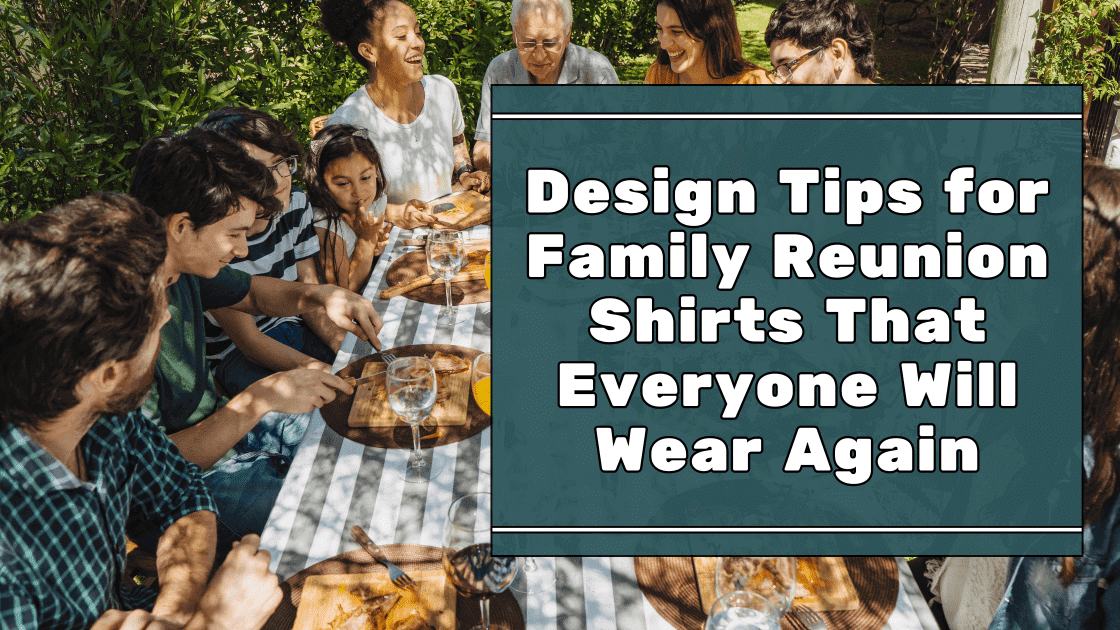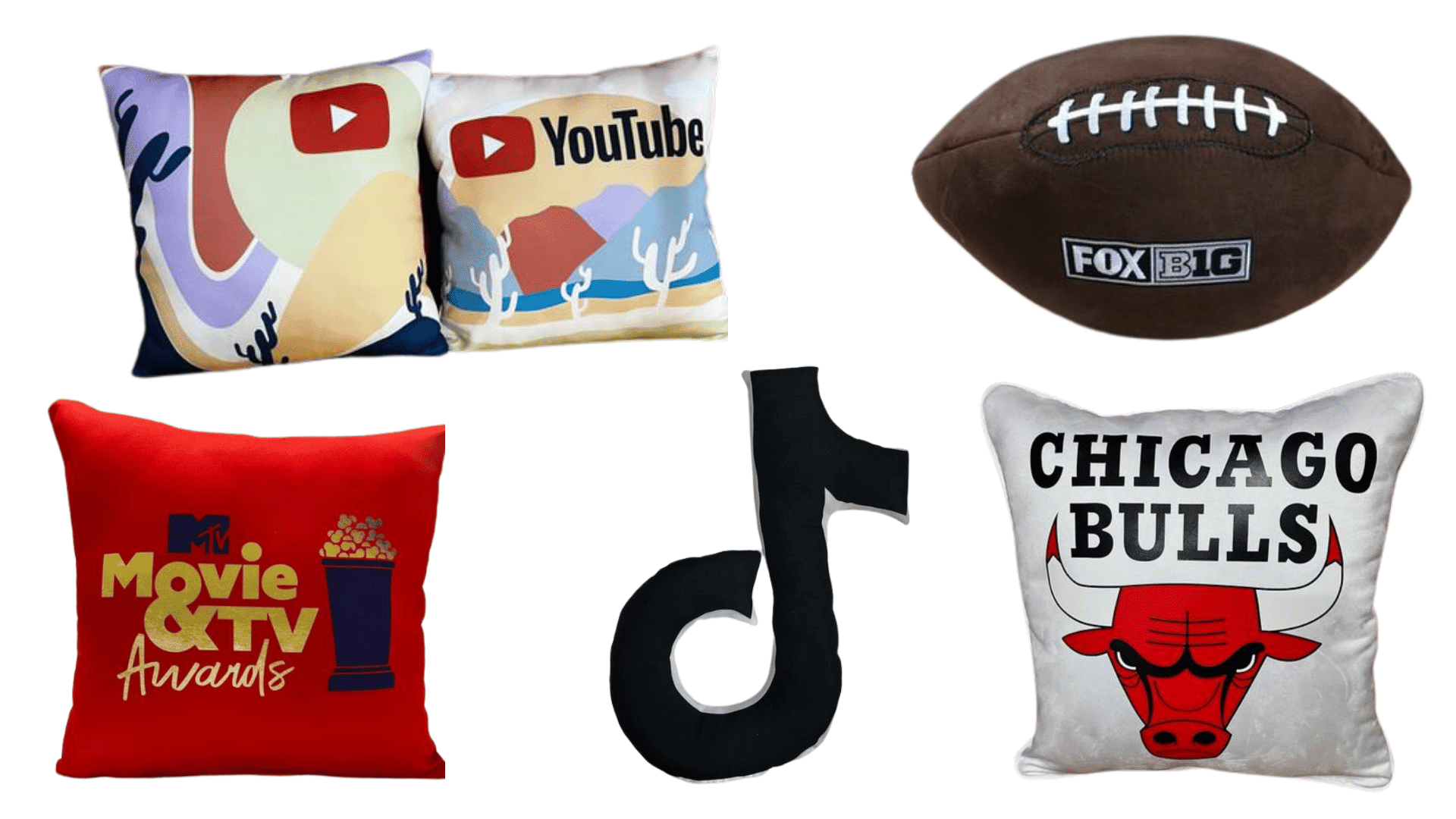Custom reunion shirts do more than mark a date. They turn a single weekend into a wearable memory that shows up in family photos, social feeds, and everyday life long after everyone flies home.
Industry studies on custom apparel show how often people keep and re-wear comfortable, good-looking shirts, which means your design choices have real staying power.
When you nail fit, fabric, and style, a reunion tee becomes that soft favorite everyone reaches for again and again.
At JNP Merchandising, we help families turn a theme into a shirt that feels premium, looks modern, and earns repeat wear.
Choosing the Right Fabric and Fit for Comfort and Style
Getting the fabric right is the fastest way to boost re-wear potential.
Fabric options to consider
- Combed ringspun cotton: Soft, breathable, and universally comfortable. Ideal for all-ages comfort and warm climates.
- Cotton blends (cotton/poly): Smoother hand-feel, less shrinkage, and better shape retention after washing. Great for active days.
- Performance blends: Lightweight and quick drying for outdoor activities, beach days, or humid locations.
- Tri-blends: Ultra-soft, drapey, and fashion-forward. These tend to feel premium and photograph beautifully.
Fit types that work for large groups
- Classic unisex: The safest default for mixed-age, mixed-height groups.
- Women’s tailored cut: Offers a flattering silhouette while matching the main design.
- Youth sizes: Order a proper youth size run rather than expecting the smallest adult sizes to fit.
- Extended sizes: Plan your size curve early and ensure inclusivity from XS through 4XL or 5XL when available.
Sizing tips
- Collect sizes during RSVP.
- Add a 5–10 percent buffer stock in common sizes for last-minute attendees.
- Choose pre-shrunk or preshrunk-like fabrics to keep post-wash surprises to a minimum.
Pro tip: If your reunion includes activities like hikes or beach sports, split your order across two fabrics. Do a soft cotton or tri-blend for the main day and a performance tee for the activity day. Two shirts can still sit within budget when planned as a single production.
Incorporating Meaningful Designs: Themes and Colors that Resonate
The best reunion shirts feel personal without being cluttered. Start with one core idea, then add a detail that only your family would recognize.
Theme ideas
- Family timeline: Year established, migration path, or a simple family tree motif.
- Location-forward: A line-art map of the city or a landmark silhouette from the reunion spot.
- Shared joke or saying: A phrase used by a grandparent or a signature family recipe icon.
- Generations: A subtle mark that denotes generation or branch, using color coding or a tiny symbol.
Color strategy
- Choose one anchor color and one accent.
- Go for mid or darker tones if you want maximum stain forgiveness throughout the weekend.
- Consider season and setting: coastal blues for beach towns, olives and terracottas for cabins or parks.
- Avoid colors that fight with skin tones across a wide group; aim for hues with broad appeal like navy, forest, maroon, or heathered neutrals.
Make it camera-ready
- Use contrast that reads from 6–8 feet away.
- Keep the front graphic clean and centered; place detailed art on the back.
- Test your palette on both indoor and outdoor backgrounds to ensure it photographs well.
Pro tip: Build a one-page style guide in your order doc that includes the Pantone or hex values, logo lockups, and placement notes. This keeps reorders or late-add shirts consistent.
Selecting Fonts and Text: Making a Statement with Words
Typography carries tone. It can make the same phrase feel classic, playful, or modern.
Smart font pairings
- Serif headline + clean sans serif subhead: Timeless and easy to read.
- Rounded sans + script accent: Friendly, casual, and great for beach or picnic themes.
- Single-family strategy: Use one font family with multiple weights to keep the design cohesive.
Copy that works
- Keep it short. Think: “Martinez Family Reunion 2025,” “Pasadena to Miami,” or “Four Generations Strong.”
- Add the location and year as a secondary line so the main wordmark stays bold and uncluttered.
- If using a quote, select one that is positive and specific to your family’s story.
Legibility rules
- Minimum 24 pt at print scale for subheads; 36 pt or larger for primary marks.
- High contrast between text and shirt color.
- Avoid thin hairlines on textured fabrics like triblends or heathers.
Pro tip: Print your design at actual size on paper and tape it to a tee. Step back 8–10 feet. If you cannot read every word in two seconds, increase the weight or clean up the layout.
Add Personal Touches: Customization Ideas Everyone Will Love
Personalization is the little upgrade that gets your shirt worn twice as often. It looks thoughtful and solves the “which shirt is mine” struggle at big gatherings.
Easy, high-impact add-ons
- Names on sleeves or back yoke in a clean block font.
- Generation badges like “Gen 2,” “Gen 3,” or “Founder.”
- Branch icons tied to each family line, printed small at the hem.
- Event map or custom crest on the left chest, with the main art on the back.
Decoration methods and when to use them
- Screen printing: Best for bold colors and larger runs. Crisp lines and long wear.
- Direct-to-garment (DTG): Great for full-color art on smaller batches or many size variations.
- Heat transfer or DTF names: Flexible for one-off personalizations without re-burning screens.
- Embroidery: A premium look for polos or hats, if you want a dressier option for a dinner.
Pro tip: Keep the placement of personalization consistent across sizes. For kids’ sizes, downscale the print width proportionally so the name does not dominate the shirt.
Tips for Budget-Friendly Shirt Design Options Without Compromising Quality
You can keep costs in check and still deliver a shirt that feels like a favorite.
Budget wins that do not look cheap
- Limit ink colors: Two inks can look premium with smart contrast and shading.
- Print zones strategically: Front chest and back center are the most visible. Skip extra sleeve hits if needed.
- Choose a heather base: Heathers add depth, so simpler art still looks elevated.
- Consolidate sizes and styles: Fewer garment SKUs lower spoilage and setup costs.
- Batch orders: Place one consolidated order rather than multiple drops.
Order math
- Ask for price breaks at higher quantities and compare per-unit costs at each tier.
- Request youth and extended sizes in the same brand and base color to avoid mixed cartons that raise complexity.
- If you want a second design for an activity day, keep the same base garment to reuse size curves and reduce waste.
Quality checks that save money
- Approve a digital proof and, for larger runs, a pre-production sample.
- Review thread colors, placements, and tolerances in writing.
- Confirm care instructions so the shirts hold up well after the reunion.
Pro tip: If you plan gift bags or activity kits, your shirt color can anchor the whole palette. Build around it with coordinating hats, totes, or water bottles. Need gift ideas for planning committees or volunteers who did the heavy lifting for your event? Find inspiration in our list of thoughtful and practical administrative assistant gifts.
Create Family Reunion Shirts That Unite and Delight Generations to Come!
A reunion shirt that gets worn again is equal parts comfort, clarity, and character. Choose a fabric that feels great on day one and day one hundred.
Keep the design readable, meaningful, and color-smart. Add personal touches that make each shirt feel like it belongs to someone special.
When you do, your reunion tee graduates from swag to keepsake, and your family’s story keeps traveling wherever the shirt goes.
At JNP Merchandising, we live for this kind of project.
Tell us your theme, your location, and your family vibe, and we will bring it to life with premium garments, on-point typography, and a production plan that fits your timeline and your budget. Your reunion deserves a shirt everyone will wear again.





